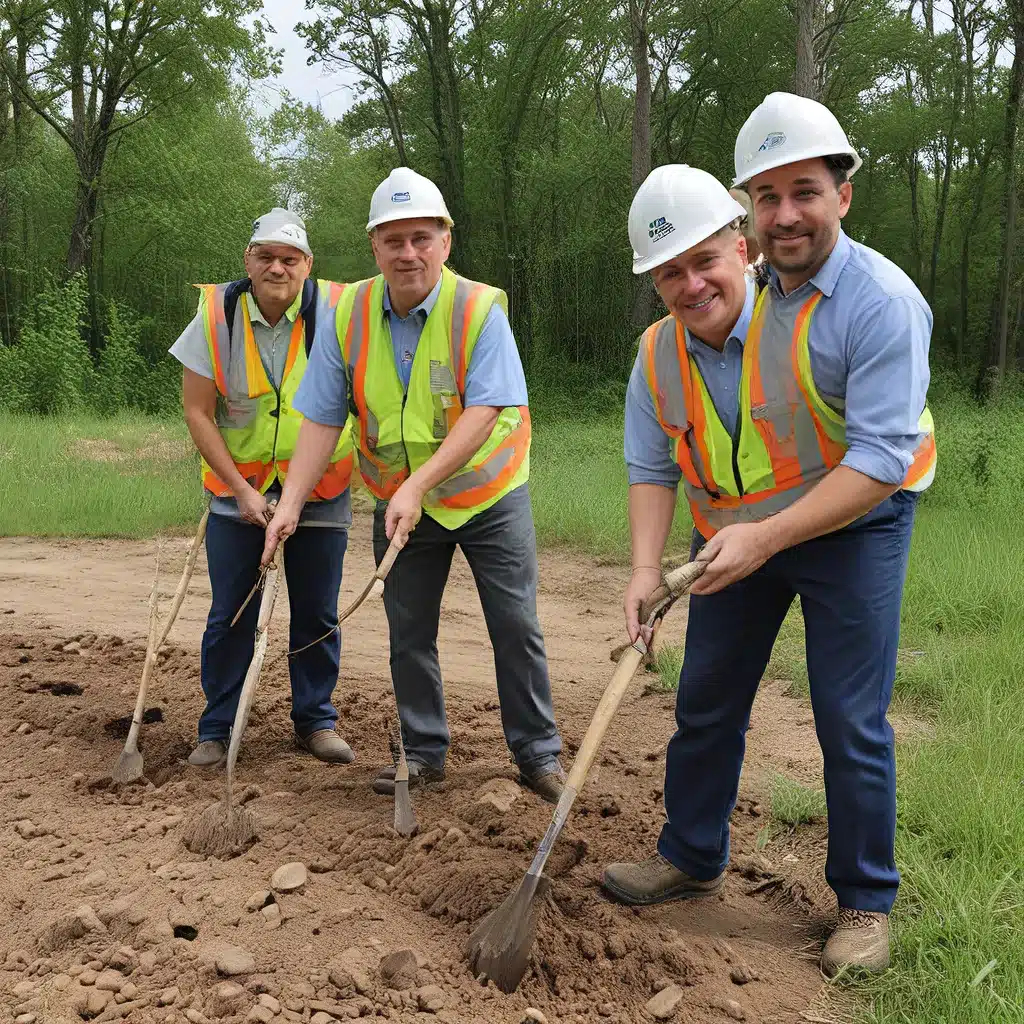
Imagine a world where once-polluted landscapes transform into thriving, vibrant ecosystems – where communities once plagued by environmental degradation now bask in the glory of renewed natural beauty. This is the awe-inspiring reality unfolding before us, as dedicated individuals and organizations come together to tackle the daunting challenge of site remediation and environmental restoration.
Turning the Tide: The Journey of Environmental Renewal
It’s a monumental task, no doubt about it. Restoring the delicate balance of our natural world, undoing the damage wrought by decades of unchecked industrial activity and unchecked waste, is a herculean undertaking. But, my friends, the remarkable progress being made in this arena is a testament to the resilience of our planet and the unwavering determination of those who have committed themselves to this cause.
Take the Muskegon Lake Area of Concern (AOC) in Michigan, for instance. Once a dumping ground for municipal and industrial waste, this site has undergone a remarkable transformation, thanks to the tireless efforts of state, federal, and local partners. Over the course of two decades, they have meticulously removed contaminated sediments, restored vital wetlands and habitats, and steadily chipped away at the various “beneficial use impairments” that had plagued the lake. And just last year, they reached a monumental milestone – the completion of all the management actions required before Muskegon Lake can be officially delisted as an AOC.
I can only imagine the sense of pride and accomplishment felt by those who have been a part of this journey. Restoring a once-degraded ecosystem to a vibrant, healthy state is no small feat, and the Muskegon Lake story is just one among many inspiring tales of environmental renewal unfolding across the Great Lakes region and beyond.
Collaborative Efforts: The Key to Lasting Change
What’s perhaps most remarkable about these site remediation successes is the level of collaboration and community involvement that underpins them. As EGLE Director Liesl Clark so aptly put it, “Community involvement and public participation are an essential part of EGLE’s mission, vision, and values.” And this sentiment rings true across the board when it comes to environmental restoration efforts.
At Inland Waters, we’ve had the privilege of witnessing firsthand the power of diverse stakeholders – from government agencies and non-profit organizations to local businesses and concerned citizens – coming together to tackle complex environmental challenges. It’s in these collaborative spaces that innovative solutions are born, barriers are broken down, and a shared sense of stewardship for our natural resources takes root.
The Muskegon Lake story is a prime example of this: state and federal officials, local community groups, and other key stakeholders have been meeting regularly since 1993 to guide the cleanup and restoration efforts, ensuring that the unique needs and perspectives of the community are at the forefront. And this level of sustained engagement and partnership is not unique to Muskegon – it’s a hallmark of successful site remediation projects across the country.
Unlocking the Potential of Environmental Restoration
As we celebrate the remarkable achievements in site remediation and environmental restoration, it’s important to recognize that these victories represent more than just the cleaning up of contaminated sites. They symbolize the unlocking of vast untapped potential – both for the natural ecosystems themselves and the communities that depend on them.
Take, for example, the transformation of the Deer Lake AOC in Marquette County, Michigan. Once plagued by sediment contamination and degraded habitats, this site has now been successfully delisted, paving the way for the restoration of valuable recreational opportunities and a renewed sense of pride and connection among the local residents.
These are the ripple effects that reverberate through communities – the improved quality of life, the economic opportunities, the reconnection with the land and water that sustains us. And as more and more sites undergo similar transformations, the potential for positive impact only continues to grow.
Embracing the Future: Ongoing Challenges and Emerging Opportunities
Of course, the work of environmental restoration is far from over. There are still countless sites across the country that require comprehensive remediation, and the challenges posed by emerging contaminants, climate change, and other complex environmental issues continue to evolve. But the progress we’ve witnessed in recent years is nothing short of inspiring, and it serves as a powerful reminder of what can be achieved when we come together and commit ourselves to the task at hand.
As we look to the future, I can’t help but feel a sense of cautious optimism. Yes, the road ahead may be long and winding, but the dedication, innovation, and community-driven approach that have characterized the successes of the past will undoubtedly continue to drive us forward. And who knows what incredible breakthroughs and transformative projects might be on the horizon, just waiting to be unleashed?
One thing is certain: whether you’re a seasoned environmental professional, a passionate community advocate, or simply someone who cares about the well-being of our planet, the journey of site remediation and environmental restoration is one that deserves our collective attention and unwavering support. For in doing so, we not only heal the land and water that sustain us, but we also nurture the very essence of what it means to be human – our connection to the natural world, our sense of responsibility, and our unwavering belief in the power of collaboration to create a brighter, more resilient future.
So let us raise a toast to the triumphs of the past, and let us eagerly embrace the promise of what’s to come. The path to environmental restoration may be long, but with each milestone achieved, we inch closer to a world where the scars of the past are transformed into the vibrant tapestry of a healthier, more sustainable future.


